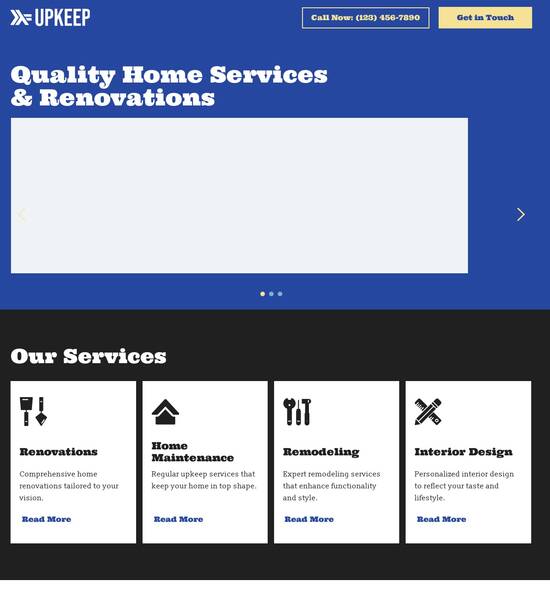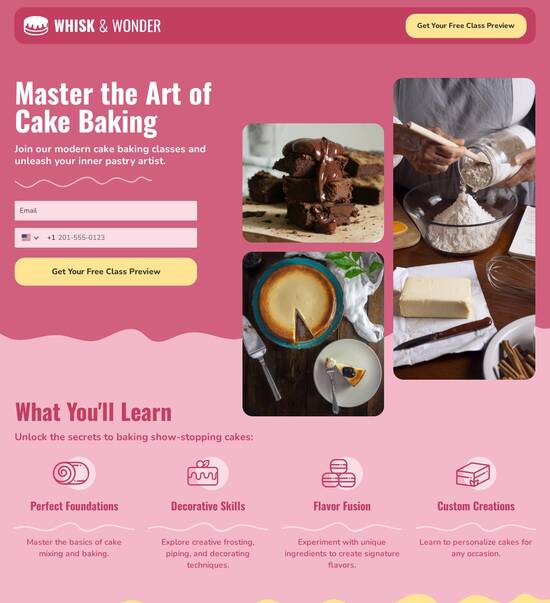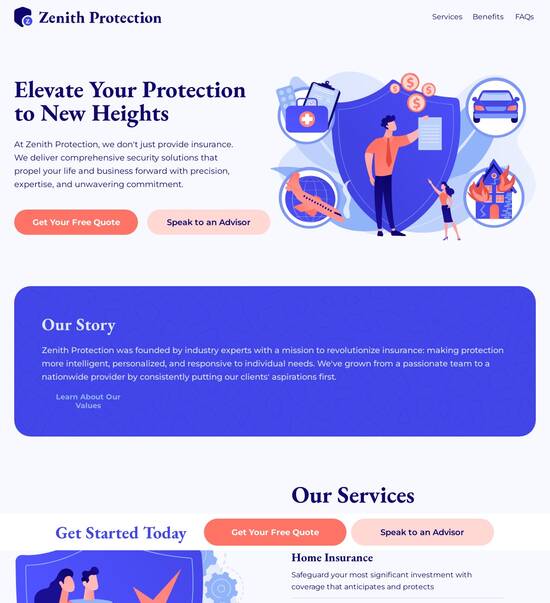
Design Microsoft Edge-ready quick links page templates
Explore Similar TemplatesAbout template
Choose the best quick links page template for Microsoft Edge
Recommended templates

Easy to build without coding
With the intuitive drag-and-drop builder, anyone on your team can create high-converting pages without any knowledge of code or design. Make enhancements to your landing page with custom widgets using Javascript, HTML/CSS, or third-party scripts.

Multiple layouts for any industry and goal
Select from 500+ landing page layouts built to boost conversions across industry-specific scenarios. Customize them by adjusting fonts, adding images, and generating on-brand content with the AI assistant. Quickly scale with Instablocks® and Global Blocks that you can save, reuse, and update globally.

Loads fast and looks polished on any device
Every template is responsive, which means they present professionally on any device and load blazingly fast with our Thor Render Engine. You can also power them up with Google AMP technology to deliver an unparalleled mobile experience and drive higher conversions.

Robust analytics & experimentation
Get real-time updates and reporting across all your devices, showing the number of visitors, conversions, cost-per-visitor, and cost-per-lead. Launch AI-powered experiments, run A/B tests, and use heatmaps to analyze user behavior, then optimize your landing page to maximize conversions.







Easy to build without coding
With the intuitive drag-and-drop builder, anyone on your team can create high-converting pages without any knowledge of code or design. Make enhancements to your landing page with custom widgets using Javascript, HTML/CSS, or third-party scripts.
Multiple layouts for any industry and goal
Select from 500+ landing page layouts built to boost conversions across industry-specific scenarios. Customize them by adjusting fonts, adding images, and generating on-brand content with the AI assistant. Quickly scale with Instablocks® and Global Blocks that you can save, reuse, and update globally.
Loads fast and looks polished on any device
Every template is responsive, which means they present professionally on any device and load blazingly fast with our Thor Render Engine.
Robust analytics & experimentation
Get real-time updates and reporting across all your devices, showing the number of visitors, conversions, cost-per-visitor, and cost-per-lead. Launch AI-powered experiments, run A/B tests, and use heatmaps to analyze user behavior, then optimize your landing page to maximize conversions.
All the features you need to build lead-generating landing pages
Explore more featuresLearn how to build top-performing landing pages for any goal
FAQs
Leading the way in building high-performing landing pages





A step-by-step guide to optimizing your landing pages with Instapage
In a competitive digital landscape, using the right tools to optimize landing pages can dramatically enhance your campaign's effectiveness. Instapage provides a comprehensive landing page and Conversion Rate Optimization (CRO) platform tailored for marketing professionals across various industries, including business services, education, and tech/SaaS.
Identifying your target audience
Understanding who you're targeting is pivotal for creating compelling content that resonates. Use Instapage's personalization features to analyze audience demographics and preferences. Gathering data about your target verticals, such as energy, financial services, and government, allows you to craft pages that specifically address each segment's pain points.
- Analyze audience data using Instapage tools to understand preferences.
- Create distinct landing pages for each vertical to ensure relevance.
- Leverage demographic insights to tailor messaging and offers.
Creating high-converting landing pages
Utilizing Instapage’s library of over 100 high-converting templates can save time and boost efficiency. Integrate lead generation elements and intuitive builders to simplify the landing page creation process.
- Select and customize a template that aligns with your campaign goals.
- Use intuitive builders to add text, images, and call-to-action buttons.
- Incorporate pre-built lead generation elements to capture user information.
Optimizing for performance
Once your pages are live, ongoing optimization is crucial. Utilize Instapage’s built-in experimentation features like A/B testing and heatmaps to refine your approach and boost conversion rates. Analyzing user interactions helps to identify which elements resonate best.
- Conduct A/B tests to compare performance between different pages.
- Use heatmaps to understand where users engage the most.
- Adjust your content based on data insights to improve conversions.
In conclusion, leveraging Instapage elevates your marketing efforts by enabling fast, efficient, and effective landing page creation. By targeting the right audience, utilizing proven templates, and focusing on optimization, marketers can maximize their ROI.
Ready to enhance your campaigns? Start using Instapage today and unlock your full marketing potential!
People also ask about Quick links page template optimized for Microsoft Edge
Quick links page template optimized for Microsoft Edge
Understanding the quick links page template: an optimization for Microsoft Edge
A quick links page serves as an essential component in modern web browsing, especially within Microsoft Edge. Its primary purpose is to give users immediate access to frequently visited websites and resources without having to sift through bookmarks or search engines. This streamlined access enhances user experience by providing a centralized hub for navigation, promoting efficiency, and improving workflow. By curating a collection of important links, users can navigate the internet more intuitively, catering to their specific needs and preferences.
Microsoft Edge stands out among contemporary web browsers due to its commitment to user-centric design. Launched as a successor to Internet Explorer, Edge has evolved significantly, incorporating features that enhance browsing performance and security. Its integration of a quick links page is a prime example, allowing users to tailor their browsing environments to match their habits and workflows. With its sleek interface and efficient functionalities, Edge can cater to personal, educational, and professional needs, making it a favorite in various verticals including business services, marketing, and education.
Architecture of the quick links page template
At the core of the quick links page is the tab page structure found in Microsoft Edge. This feature is designed to simplify navigation by housing different functionalities all in one place. The quick links page integrates seamlessly within the tab page, allowing users to easily switch between frequently used sites without complexity. The design ensures that users can access their links with just a click, effectively reducing the time spent searching for frequently visited destinations.
Key components of the quick links page include the following:
URL
Each link must have a valid and correctly formatted URL, ensuring direct connectivity to resources.
Links
These can vary in type, from standard URLs to file links or even application links that users often utilize.
Tiles
Tiles can be customized in layout, allowing users to arrange their quick links in a way that makes sense for their browsing habits.
Title
Descriptive titles for each link significantly enhance user accessibility and clarity, making it easier to navigate.
Customizing the user experience with link tiles
One of the most engaging aspects of a quick links page is the ability to create and manage link tiles. To add new link tiles, simply right-click on the quick links area and select 'Add Link'. From there, users can input the URL, assign a title, and select an icon for visual representation. This simple step allows for an organized approach to web navigation, ensuring that users have instant access to their preferred resources.
Once the tiles are created, managing them follows suit. Users can edit existing tiles by right-clicking and selecting 'Edit', making it easy to update URLs or titles as needs change. Furthermore, arranging tiles by dragging and dropping them into desired positions streamlines access to frequently used links. To maximize user experience, consider the following design and layout best practices:
Maintain size consistency
Uniform tile sizes contribute to a clean and organized appearance.
Choose contrasting colors
Contrasting colors enhance visibility and guide user attention to important links.
Incorporate relevant imagery
Images can add context, making it easier to identify links quickly.
Shortcuts can significantly improve browsing efficiency. By integrating keyboard shortcuts with quick links, users can access their most important sites without even lifting their hands from the keyboard. This level of convenience promotes a more seamless browsing experience.
Establishing a personalized links list
Creating a default links list for Edge users is essential for maximizing productivity right from the start. Users can set up a collection of essential links, allowing for immediate access to favored sites. Additionally, syncing this links list across devices ensures consistency, meaning users can enjoy the same browsing experience irrespective of the device they use.
User customization plays a crucial role in crafting a personal links list. Encouraging users to adapt the list to fit their individual preferences promotes a sense of ownership. This can involve adding, deleting, or rearranging links based on frequency of use or changing needs. Grouping links by categories such as activity, project, or even frequency of use can enhance navigation further. Techniques like tagging and color-coding links also expedite the identification process, making it effortless to find what users need at a glance.
Security and policy considerations
Security remains a significant concern with web browsing, and Microsoft Edge addresses this with various policies and features designed to protect users. Understanding Edge's security policies is essential for maintaining a safe browsing environment. These policies help mitigate risks associated with unverified links and malware, creating a safer user experience.
Developing secure links requires best practices like verifying URLs before adding them to the quick links page. Users also bear the responsibility of regularly managing their links to ensure integrity. This includes checking for broken links and removing any that lead to insecure sites. Awareness of the consequences of using unverified or potentially harmful links can help prevent security breaches.
Practical applications of quick links page template
The quick links page template finds numerous practical applications across various sectors. In professional environments, businesses leverage these pages to enhance team collaboration by providing easy access to shared documents, project management tools, and communications platforms. For example, a marketing team may create a link list that incorporates their social media accounts, project management software, and analytic tools, facilitating effective communication and streamlined workflow.
In educational contexts, quick links serve as organizational tools for students and educators alike. Students can manage their resources, assignments, and online classes by compiling all relevant links. Educators can create customizable portals to share learning materials and resources, ensuring that students are equipped with all necessary tools for their academic success. On a personal level, daily tasks and project management become more efficient when using a personalized quick links page.
Performance metrics and optimization strategies
To ensure the effectiveness of the quick links page, analyzing user engagement metrics is critical. This includes evaluating click rates, frequency of use, and general user satisfaction. Collecting feedback from users can create feedback loops that provide valuable insights, helping to enhance the page's overall effectiveness. Continuous improvement of the links list can keep it relevant and user-friendly.
Revising links based on usage patterns allows for a dynamically tailored experience that resonates with users' current needs. Strategies for keeping links fresh and relevant may include periodic reviews of the links list and an assessment of user behavior. By doing so, users can create a quick links page that consistently meets their browsing demands.
Future trends in quick links optimization
Looking ahead, innovations in browsing and link management are likely to shape the future of quick links pages. With an increasing emphasis on AI and machine learning, personalizing quick links for users is expected to become more prevalent. By analyzing user behavior and preferences, browsers could automatically adjust quick links based on the most frequently accessed sites, making navigation even more intuitive.
Microsoft Edge is anticipated to roll out enhancements targeting user experience in quick links functionality. Future updates may include advanced categorization options, predictive link suggestions based on browsing history, and improved synchronization across devices, enriching user experience further. As user needs continue to evolve, staying engaged with these trends will keep users ahead in their browsing efficiency.
A comparative view: quick links across different browsers
While Microsoft Edge offers a user-friendly quick links page, other popular browsers also provide unique quick link features worth exploring. For instance, Google Chrome organizes frequently visited sites distinctly on its new tab page, while Firefox allows users to customize their speed dial extensively with a focus on aesthetics. Safari, on the other hand, emphasizes privacy features and seamless integration with Apple's ecosystem for ease of use.
Understanding quick link features across these browsers can provide valuable insights for Edge users. Not only does this insight inspire improvements to their quick links experience, but it also helps participants in the Microsoft Edge community share best practices. By exploring these different functionalities, Edge users can tailor their browsing experiences and adopt effective strategies from other platforms.
The impact of user feedback on future developments
User feedback has always played a critical role in shaping the development of web browsers, including Microsoft Edge. Collecting user opinions through surveys, forums, and direct engagements helps developers understand contemporary user needs and preferences. There are numerous case studies illustrating how user-driven design changes have positively transformed browser functionalities, including the quick links page.
Community engagement is equally valuable. Encouraging Edge users to share their customizations and improvements fosters a sense of community focused on optimization and efficiency. Sharing insights and suggestions can lead to collective growth and create opportunities for innovative developments that align closely with user needs.
Ready to skyrocket conversions?
Supercharge your ad campaigns with high-performing landing pages
Get started














